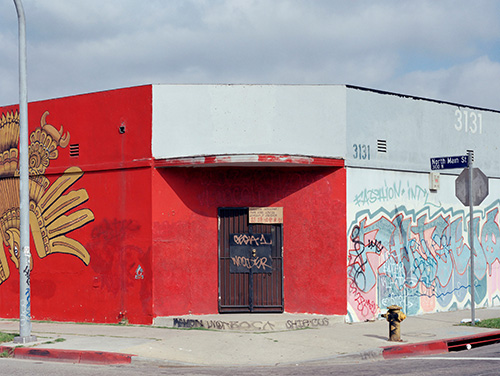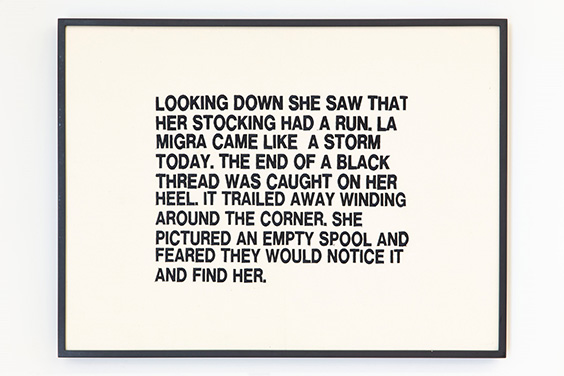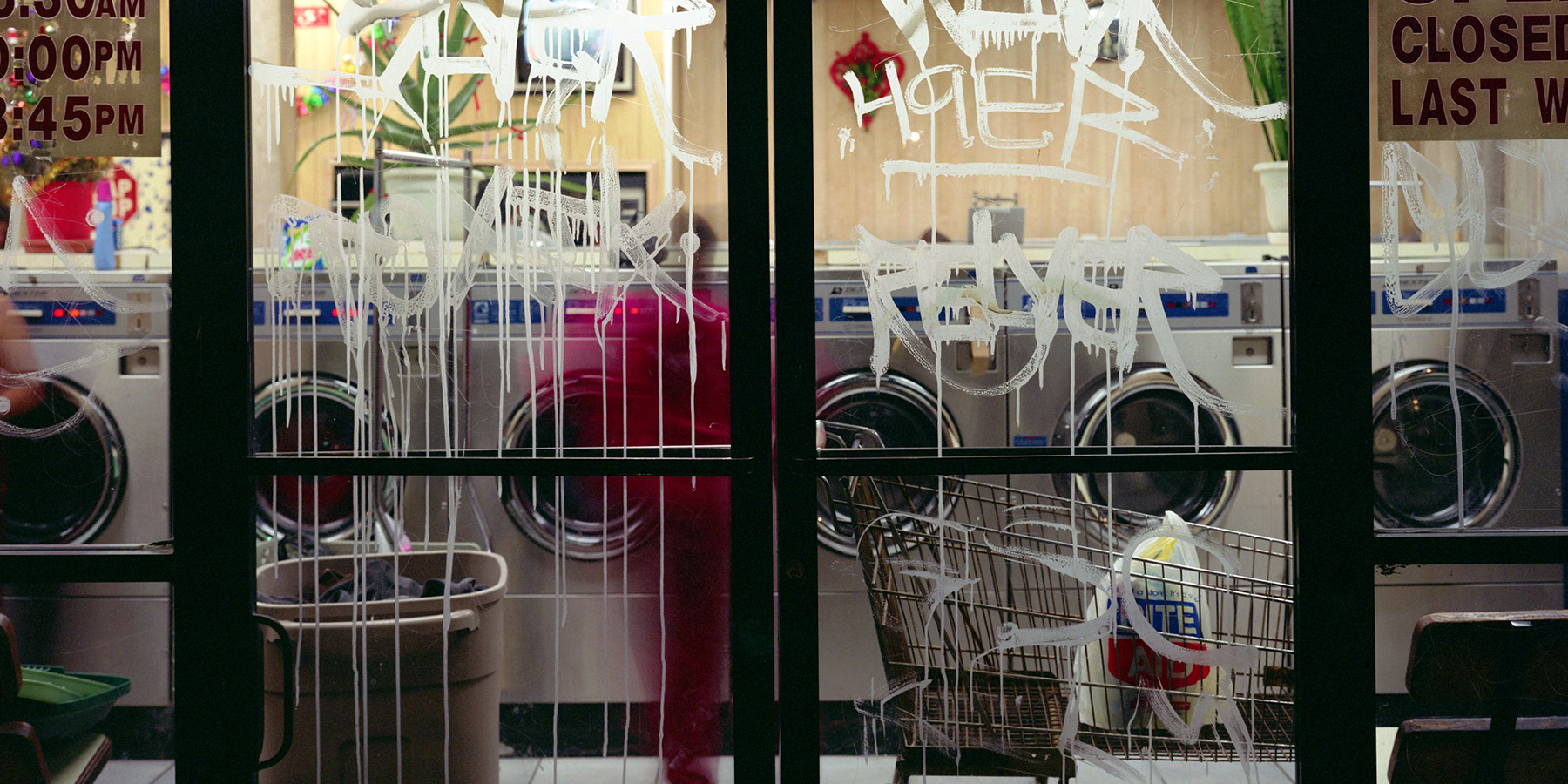Ahead of her Elson Lecture on March 17, take a closer look at Fernandez’s Lavanderia series and its ties to Edward Hopper.
For three decades, Los Angeles–based photographer Christina Fernandez has made works that intertwine Mexican American culture, migration, gender, and labor issues.
Fernandez learned about the human cost of labor at an early age as the child of organizers for the United Farm Workers of America union. Reading newsletters about the dangerous working conditions in California left a deep impact on her.
In Lavanderia, Fernandez turned her lens to a form of work that is often overlooked—domestic labor. The series captures lavanderias, or laundromats, at night. Looking in from the outside, we see rows of identical machines. Among them, anonymous people are doing the everyday task of laundry.
These luminous night scenes recall some of the moody paintings of American artist Edward Hopper. Fernandez, like Hopper, depicted urban life from a distance. Standing at some remove, we realize just how beautiful the daily dramas of life can be.
Making the Cost of Labor Visible
One of Fernandez’s earliest projects, Untitled Farmworkers, consisted of a mound of dirt into which she placed 54 cards. Every card listed the name of a worker and their cause of death, such as heatstroke or leukemia developed from drinking toxic water. Fernandez’s graduate school classmates thought the deaths were too horrific to be true.
Fernandez connects her projects with the tradition of American documentary photographers like Lewis Hine and Dorothea Lange, who used their cameras as tools for activism. Hine’s photographs of underage factory and mill workers in the early 20th century contributed to the creation of child labor laws. Lange, working a few decades later for the Farm Security Administration, famously photographed migrant workers and the harsh conditions they experienced.

Lewis Hine, Addie Card, 12 years old. Spinner in cotton mill, North Pownal, Vermont, 1910, gelatin silver print, Pepita Milmore Memorial Fund, 2014.164.1

Dorothea Lange, Filipinos cutting lettuce, Salinas Valley, California, June 1935, gelatin silver print, Gift of Daniel Greenberg and Susan Steinhauser, 2016.191.9
In her later series Manuela S-T-I-T-C-H-E-D, Fernandez pairs photographs of garment factories in East Los Angeles with embroidered panels of stories from women who worked there. East LA is the center of the American garment production industry as well as home to the largest Mexican American, or Chicanx, and Latinx community in the country. Tens of thousands work in these factories, often for long hours, making below the federal minimum wage.
The stories in Manuela S-T-I-T-C-H-E-D reveal the sweatshop conditions workers face behind the factories’ unmarked exteriors. Their labor is invisible, but this series makes their stories visible.


Christina Fernandez, Fashion International, 1996, chromogenic print and Manuela Stitched Text, 2001, embroidery panel, courtesy of Gallery Luisotti
Lavanderia Series
For Lavanderia, Fernandez photographed laundromats in the Boyle Heights neighborhood of East LA. She took vivid pictures of their fluorescent interiors by using a large format view camera, one of the first cameras developed in the 1800s.
Using a long exposure (the length of time the lens is open), Fernandez captured carefully folded piles of laundry, bottles of detergent, and bins waiting to be filled. But anything that moves during the long exposure time shows as a blur. In some photographs, ghostly figures fill or empty machines. In others, people stand still, waiting for their cycles to finish. We never see their expressions, or even their faces. They are anonymous.
We also don’t see the people walking by outside, the cars parked out front, the restaurant next door. We don’t even see the name of the laundromat—the works are titled Lavanderia #1, Lavanderia #2, and so on.
Look closely and you’ll notice that each shot includes the frame of a window or door. This reflects Fernandez’s interest in the built environment and urban landscape. Remember the garment factories? In Lavanderia, the transparent facades reveal the life and labor within the buildings while keeping us at a distance. Dripping graffiti or a smudged window reinforces the separation.
Fernandez and Hopper: Urban Life through a Window
Fernandez sees a link between Lavanderia and Edward Hopper’s work. She says the series echoes “Hopper’s focus on the mundane details and psychological tensions of everyday life.”
In his iconic painting Nighthawks, Hopper eliminates nearly all peripheral details (although we do see the sign above the restaurant). There are no people, trees, or cars on the street. Just large, nearly floor-to-ceiling, windows that reveal the scene inside the corner diner.
We’re left to imagine the interactions—and inner lives—of the four figures in Hopper’s painting. What brought them there at this late hour? What time is it? What did they do during the day? Are they resting after a long day or caffeinating before a long night?
Similarly, Fernandez’s glowing laundromats and the anonymous figures inside show us the loneliness of urban life through a window. Public spaces, Fernandez says, act as a “stage for the daily dramas of life—the mundane, the tragic, the ordinary.”
Top image: Christina Fernandez, Lavanderia #1, 2002, printed 2021, inkjet print, Gift of David Knaus, 2022.46.1
Discover more great women artists
Art in your inbox
Our weekly email features news, events, exhibitions, and more.






